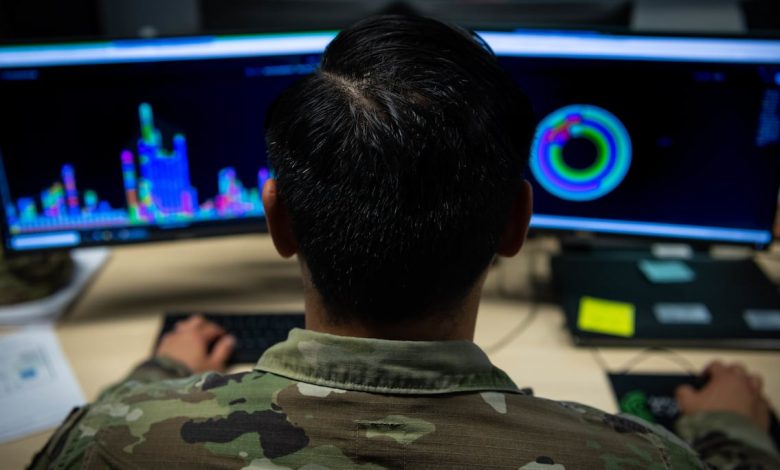America’s arsenal of democracy needs a software renaissance

In 1940, as Europe descended into chaos and the specter of war loomed, the U.S. faced an urgent need to rearm and prepare for conflict. Within a few short years, the nation transformed itself into the “Arsenal of Democracy,” producing weapons, vehicles and munitions on an unprecedented scale. This industrial mobilization did more than supply the Allied forces — it showcased America’s unmatched ability to adapt to a rapidly changing world.
Today, the stakes are also critical. The global security environment is undergoing seismic shifts, with threats evolving at a speed and scale unseen since the Cold War. Yet, unlike the industrial mobilization of the past, the modern battlefield is defined not only by hardware but also by the ability to leverage software–systems capable of adapting at speed and precision, processing vast amounts of data and enabling real-time decision-making.
To meet today’s challenges, the U.S. must modernize its industrial base and embrace a new approach to software: software-defined warfare (SDW). By prioritizing software as a core enabler of military capability, the Defense Department can enhance its ability to adapt, improve interoperability and ensure its continued technological edge in the face of rapid advancement.
This vision is central to the Atlantic Council’s Commission on Software-Defined Warfare, which has convened leaders from government, industry and academia to identify actionable steps for modernizing the U.S. defense enterprise. The commission’s recommendations emphasize the urgent need to integrate software across all domains of warfare, streamline acquisition processes and cultivate a workforce capable of advancing this transformation.
The path forward: Data and commercial software
A simple truth lies at the heart of software-defined warfare: the ability to collect, process and act on data faster than the adversary is critical to prevailing in future conflicts. Yet, the DOD lacks a unified, scalable approach to managing its vast data resources.
To address this, the commission recommends mandating the creation of an enterprise data repository and investing in artificial intelligence enablers. A centralized repository would ensure that critical data — collected from a wide variety of platforms — is accessible, organized and prepared for multiple uses. By pairing this repository with AI-ready tools, including machine learning models and enterprise machine learning operations (MLOps) platforms, DOD can empower decision-makers with actionable insights in real-time.
Equally critical is the need to shift from bespoke software development to leveraging proven commercial software solutions. Despite statutory guidance that prioritizes commercial acquisitions, DOD often defaults to custom-built systems, resulting in higher costs, longer timelines and reduced flexibility. The commission calls for commercial software to become the default approach, with clear checkpoints to ensure that acquisition decisions align with this priority.
Adopting commercial software enables the rapid integration of cutting-edge innovations already tested in the private sector. It reduces duplication and waste, as commercial solutions can be scaled across multiple use cases. It also ensures software systems can be continuously updated, keeping pace with the rapid tempo of technological change.
By focusing on these two areas — data management and commercial software acquisition — DOD can achieve near-term gains while laying the groundwork for long-term success.
Transforming DOD into a much more software-centric organization also requires investment in human capital. The development of a skilled and sustainable workforce is essential to realizing the promise of SDW. DOD must expand training programs to equip personnel with the skills needed to operate and innovate in a software-driven environment. Partnerships with academia and industry can help build pipelines of technical talent while recruiting software engineers into key roles will ensure DOD can leverage cutting-edge expertise.
Yet, SDW is not just a domestic initiative; it is a strategic imperative that must be pursued in partnership with allies who are making similar investments. Interoperability across allied systems and collaborative innovation will be critical to countering adversarial advances. By fostering joint development and experimentation, the U.S. and its partners can create a unified front capable of meeting global security challenges.
The challenges are immense, but the solutions are within reach. As the global security landscape grows more complex, the U.S. cannot afford to rely on outdated processes and legacy systems. Software-defined warfare provides a clear path to modernize and reimagine America’s defense capabilities for the 21st century.
The commission has outlined a roadmap built on three pillars: technology, processes and people. By focusing on data and commercial software as foundational priorities, DOD can achieve the agility, adaptability, and resilience necessary to maintain its strategic advantage.
America’s arsenal of democracy must be reimagined for the digital age. This is not a matter of preference but of necessity. The stakes could not be higher, and the time to act is now.
Dr. Mung Chiang is president of Purdue University and co-chair of the Atlantic Council’s Commission on Software-Defined Warfare. Mark Esper, the 27th secretary of defense, is board director of the Atlantic Council and a co-chair of its Commission on Software-Defined Warfare. Christine Fox, former acting deputy secretary of defense, is a senior fellow at Johns Hopkins University Applied Research Laboratory and co-chair of the council’s Commission on Software-Defined Warfare.







